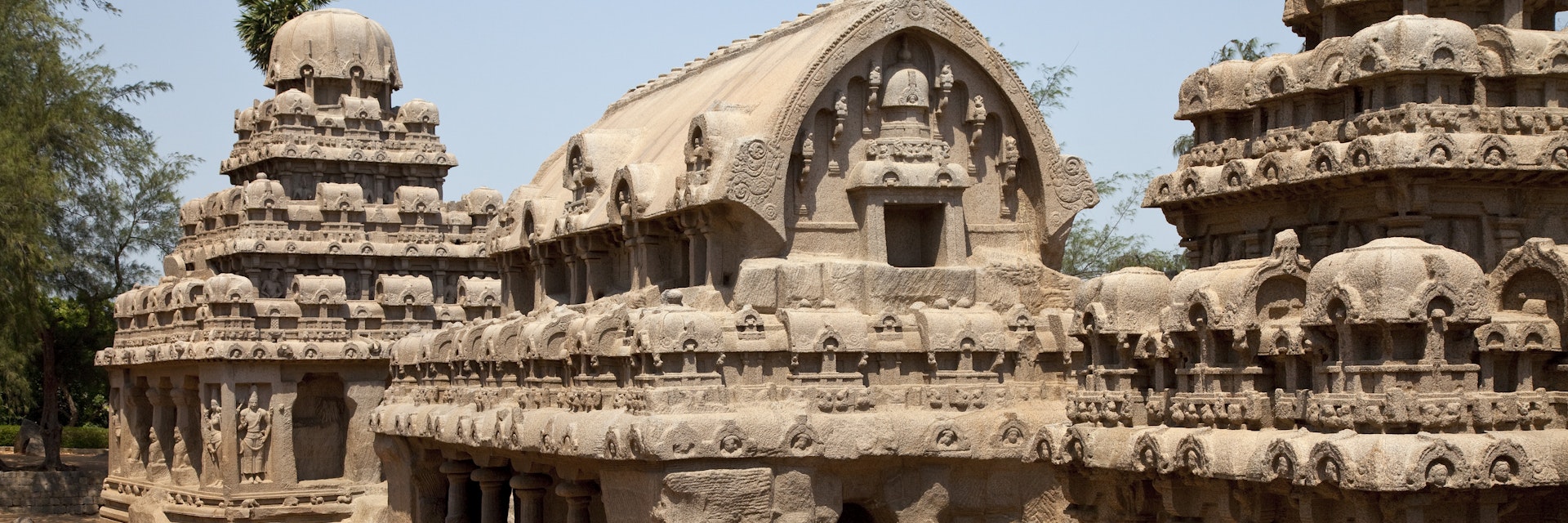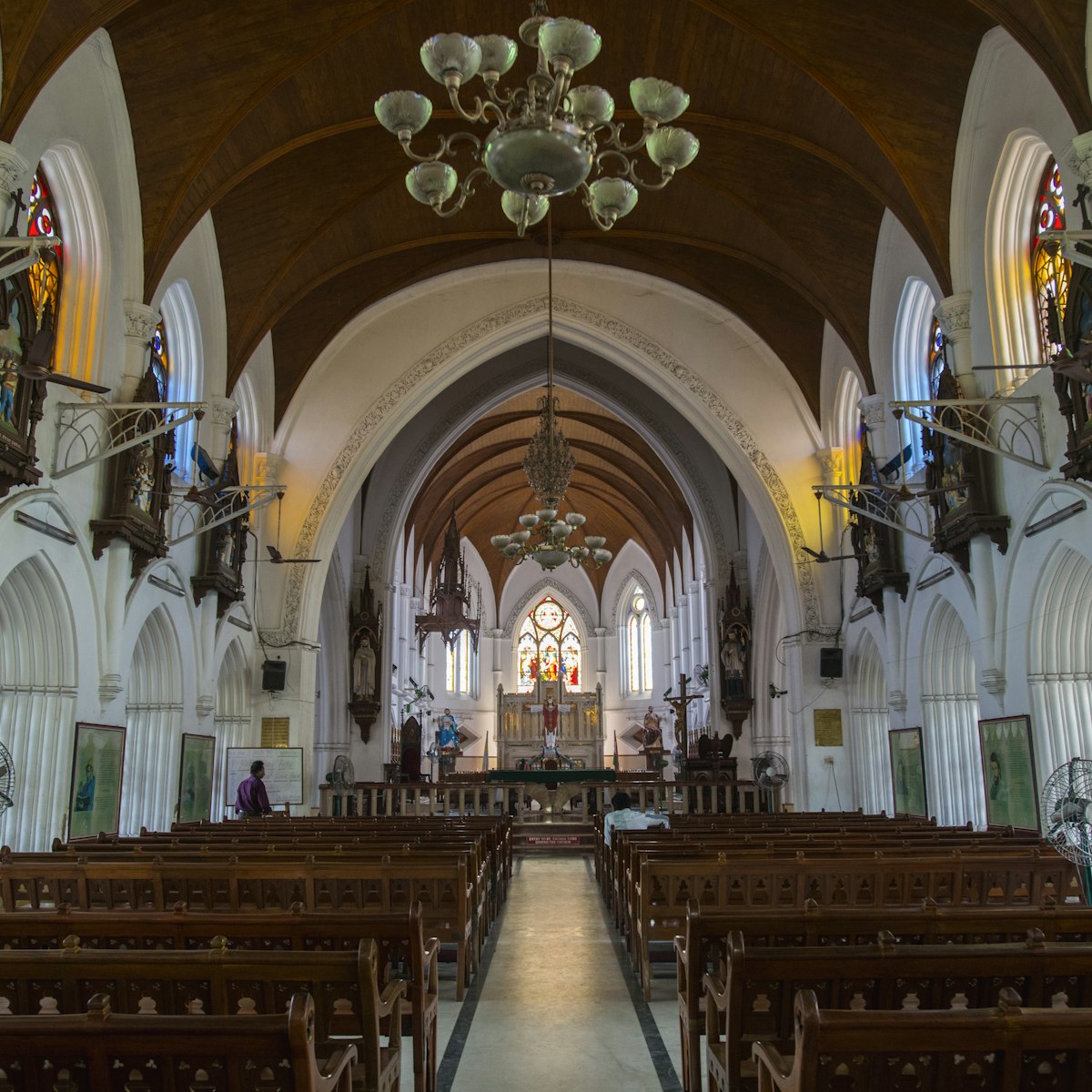Huddled together at the southern end of Mamallapuram, the Five Rathas were, astonishingly, all carved from single large rocks. Each of these fine 7th-century temples was dedicated to a Hindu god and is now named after one or more of the Pandavas, the five hero-brothers of the epic Mahabharata, or their common wife, Draupadi. The rathas were hidden in the sand until excavated by the British 200 years ago.
Ratha is Sanskrit for 'chariot', and may refer to the temples' form or to their function as vehicles for the gods. It's thought that they didn't originally serve as places of worship, but as architectural models.
The first ratha on the left after you enter is the Draupadi Ratha, in the form of a stylised South Indian hut. It's dedicated to the demon-fighting goddess Durga, who looks out from inside, standing on a lotus, and is depicted on the outside walls. Female guardians flank the entrance; a huge sculpted lion, Durga's mount, stands outside.
Next, on the same plinth, is the 'chariot' of the most important Pandava, the Arjuna Ratha, dedicated to Shiva. Its pilasters, miniature roof shrines and small octagonal dome make it a precursor of many later South Indian temples. A huge Nandi sits behind. Shiva (leaning on Nandi, south side) and other gods are depicted on the temple's outer walls.
The barrel-roofed Bhima Ratha was never completed, as evidenced by the missing north-side colonnade; inside is a shrine to Vishnu. The Dharmaraja Ratha, tallest of the temples, is similar to the Arjuna Ratha but one storey higher, with lion pillars. The carvings on its outer walls mostly represent gods, including the androgynous Ardhanarishvara (half Shiva, half Parvati) on the east side. King Narasimhavarman I appears at the west end of the south side.
The Nakula-Sahadeva Ratha (named after twin Pandavas) stands aside from the other four and is dedicated to Indra. The life-size stone elephant beside it is one of India's most famous sculpted elephants. Approaching from the gate to the north you see its back end first, hence its nickname Gajaprishthakara (elephant’s backside).
Tour groups tend to arrive around 10am, so do yourself a favour and arrive earlier!


